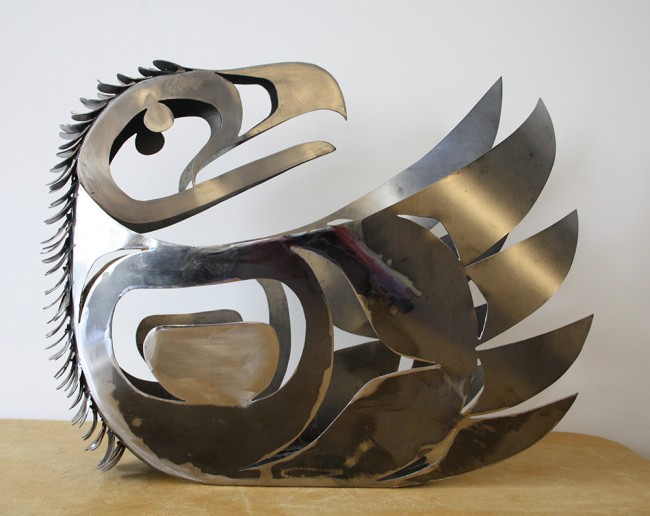
Michelle Stoney
Michelle Stoney has a progressive approach to First Nations art that allows for, and encourages a wide range of interpretations.
She was raised on Gitxsan territory, in the house of Delgamuukw, and is also Cree on her father’s side. The stylistic practices of both her Gitxsan and Cree heritage are evident in her work. She combines Northwest Coast formline (distinctive continuous flowing lines) with the bright colours and black outlines more common in Cree tradition.
“By incorporating two distinct cultures, I feel I am contributing positively to the future of First Nations art,” says Stoney.
Her inspiration comes from her late grandfather, Victor Mowatt, who was a master Gitxsan carver. During their initial collaborations, they often disagreed about stylistic preferences. “In his generation, everything needed to be functional, but I wanted to reinterpret some traditional techniques to suit my own aesthetic,” says Stoney. She credits the development of her individual style to the time she spent studying at Emily Carr University of Art + Design, where she earned a Bachelor of Fine Arts.
During her foundation year, Stoney had to try out different artistic mediums. While she works primarily in acrylic painting and metal sculpture, her take on traditional techniques has numerous forms. “I worked with wood, abalone, animal hide, and metal and always tried to find something no one else was doing—to make something different,” she says. She has since translated the traditional First Nations practice of creating functional art onto contemporary forms by incorporating her designs on mugs, clothing, cribbage boards, lamps, and slippers.
Stoney has moved back to Gitxsan territory and had her first formal exhibition at Smithers Art Gallery in the fall of 2016. She is currently working on a mountain series focused on Stygyoden (Rocher de Boule), exploring the concept that “everyone sees something different in the mountain, and wherever you go in the area the mountain transforms, depending on the angle you are viewing it from.” Stoney is also interested in recreating her mountain series in silkscreen, a calendar, or as posters, providing a more affordable way for many in her community to purchase and enjoy her work.
Shortly before his death, Stoney’s grandfather asked her to take on the task of completing his unfinished projects. “He felt I was now ready,” says Stoney. This coming summer (a customary year after his passing), she will begin work on her grandfather’s unfinished carvings.




Congratulations Michelle.
👤 Lawrence 🕔 Apr 20, 2017